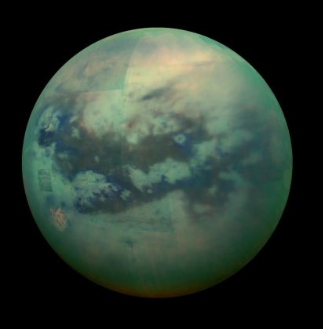Liquid methane spotted on Titan moon of Saturn
Using data obtained by NASA’s Cassini spacecraft, scientists have found that Saturn’s largest moon Titan has small liquid lakes that run more than 100 metres deep, perched atop hills and filled with methane.
What are the Findings?
The findings published in the journal titled Nature Astronomy make the following observations:
- Titan has landforms akin to Mesas towering above the nearby landscape, topped with liquid lakes more than 300 feet deep comprised mainly of methane.
- Scientists suspect the lakes were formed when surrounding bedrock chemically dissolved and collapsed a process which occurs with a certain type of lake on Earth.
- The scientists also observed “phantom lakes” on Titan that during wintertime appeared to be wide but shallow ponds but perhaps were only a few inches deep and evaporated or drained into the surface by springtime, a process taking seven years on Titan.
- The findings also presented evidence about Titan’s hydrological cycle, with liquid hydrocarbons raining down from clouds, flowing across its surface and evaporating back into the sky which is comparable to Earth’s water cycle.
- Scientists suspect Titan could potentially could harbour life possibly in the surface bodies of liquid hydrocarbons because of Titan’s complex chemistry and distinctive environments.
Titan which is the moon of Saturn has a diameter of 5,150 km and is the solar system’s second largest moon, behind only Jupiter’s Ganymede. It is bigger than the planet Mercury.
Titan is the most Earth-like body in the solar system. It has lakes, canyons, rivers, dune fields of organic sand particles about the same size as silica sand grains on Earth.
Month: Current Affairs - April, 2019


